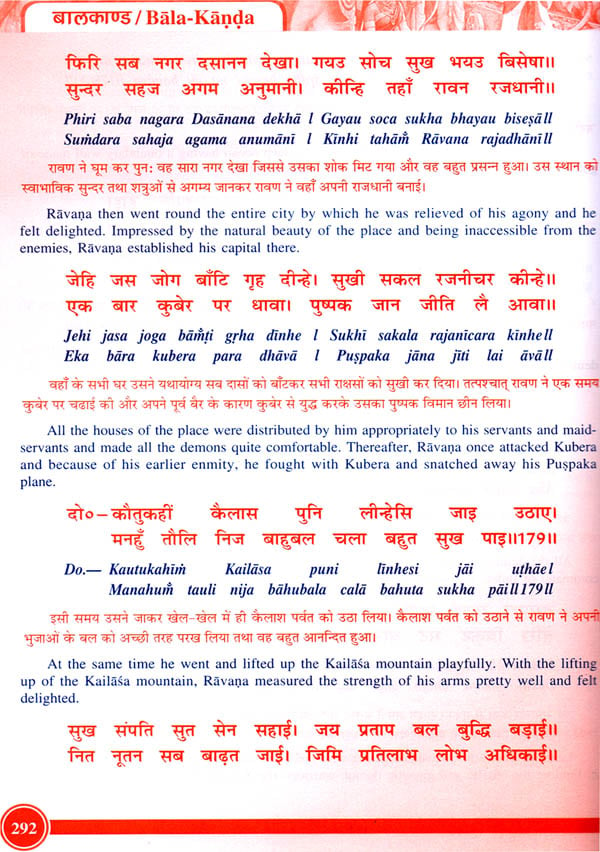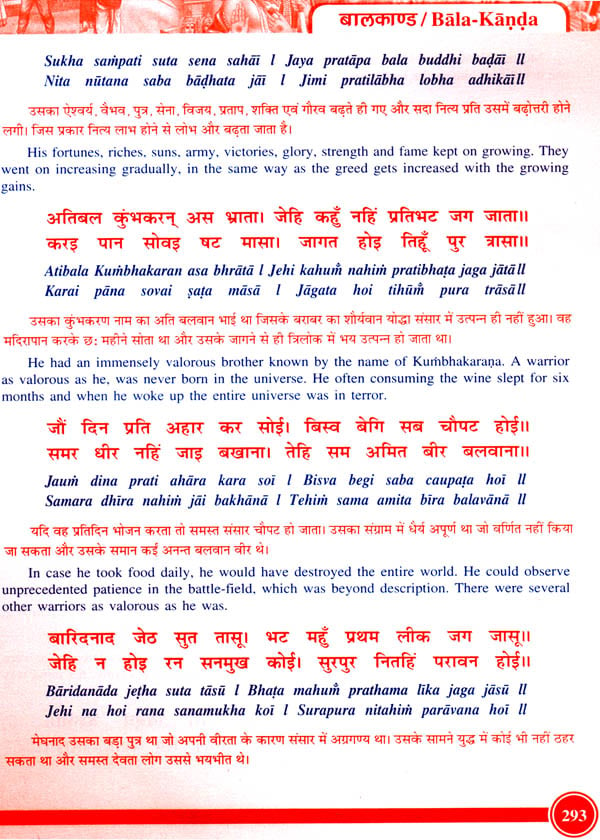
श्रीरामचरितमानस: Sri Ramacaritamanasa (Profusely Illustrated with Paintings and Images of Sculptures) (Set of Three Volumes) (Sanskrit and Hindi Text with Transliteration and English Translation)
Book Specification
| Item Code: | NAF287 |
| Author: | Shanti Lal Nagar |
| Publisher: | Parimal Publication Pvt. Ltd. |
| Language: | Sanskrit and Hindi Text with Transliteration and English Translation |
| Edition: | 2014 |
| ISBN: | 9788171104505 |
| Pages: | 2000 |
| Cover: | Hardcover |
| Other Details | 11.5 inch x 9.0 inch |
| Weight | 4.96 kg |
Book Description
Preface
The exact time of the emergence of the story of Rama over the secred soil of India, would be difficult to estimate out, because Ramakatha has been popular in the country from the time immemorial. Some scholars have tried to trace the genesis of the story of Rama in the Vedic literature. In this connection Nilakantha happens to be the foremost of such scholars, who had been able to correlate many of the events of Rama’s story to be the hymns of the Vedas. Besides the above, several of the characters of Ramayana are found present in the Vedic literature; a few of them are detailed here under –
(1)The Seers
Several of the seers of Ramayana are found mentioned in the Vedic literature, a few of which are detailed as follows –
| (i) Agastya | Rgveda,7.33.10. |
| (ii) Artri | Rgveda, fifth mandala |
| (iii) Bharadvaja | Rgveda, 7.13.3. |
| (iv) Bhargava | (a) Aitreya Brahmana, 7.2.1 (b) Kausitaki Brahmana, 13.4 |
| (v) Gautama | Satapatha Brahmana, 4.15.1 |
| (vi) Narada | Atharvaveda, 5.15.1 |
| (vii) Rsyasrnga | Jaiminiya Upanisad Brahmana, 3.48.1. |
| (viii) Vasistha | Rgveda, seventh mandala, |
| (ix) Visvamitra | Rgveda, 3.35.5. |
| (x) Ahalya | Satapatha Brahmana, 3.4.18 |
(2) Other Characters
Several of the rulers of the age of Ramayana are also found mentioned in the Vedic literature as would be evident from the following examples –
| (i) Rama | Rgveda 1.93.14, |
| (ii) Darsaratha | Rgveda, 1.926.4, |
| (iii) Iksvaku | Rgveda, 1.126.4, |
| (iv) Janaka | (a) Taitiriya Brahmana, 3.10.9, (b) Satapatha Brahmana, 11.3.1.2. |
| (v) Lakshmana | Atharvaveda, 4.141.2. |
| (vi) Raghu | Rgveda, 5.45.9. |
| (vii) Bharata | Rgveda, 3.9.22, 24, 33. |
| (viii) Sita | Rgveda, 4.5.7.6-7, |
| (ix) Hanuman | Rgveda, 10.79.1. |
Undoubtedly, the credit for popularizing the Ramakatha among the masses and carrying the same to every house in northern India, goes to the holiest of the holy sage Tulasidasa, but there is no doubt that the sage composed by a number of poets from Ramayana and other texts of Rama’s story which were composed by a number of poets from Valimiki to Tulasidasa. There could, however, be no two opinions on the issue, that soon after the composition of the Ramayana of Valimiki, there was a boost in the popularity of Ramakatha. Initially we shall have to take into account the glory of the composition of the poetry of Valimiki, which was indeed superb. Evidently the fragments of the story of Rama were available in the country in one or the other form and the people could comfort their hearts by discussing any one of the events relating to the life of Rama.







